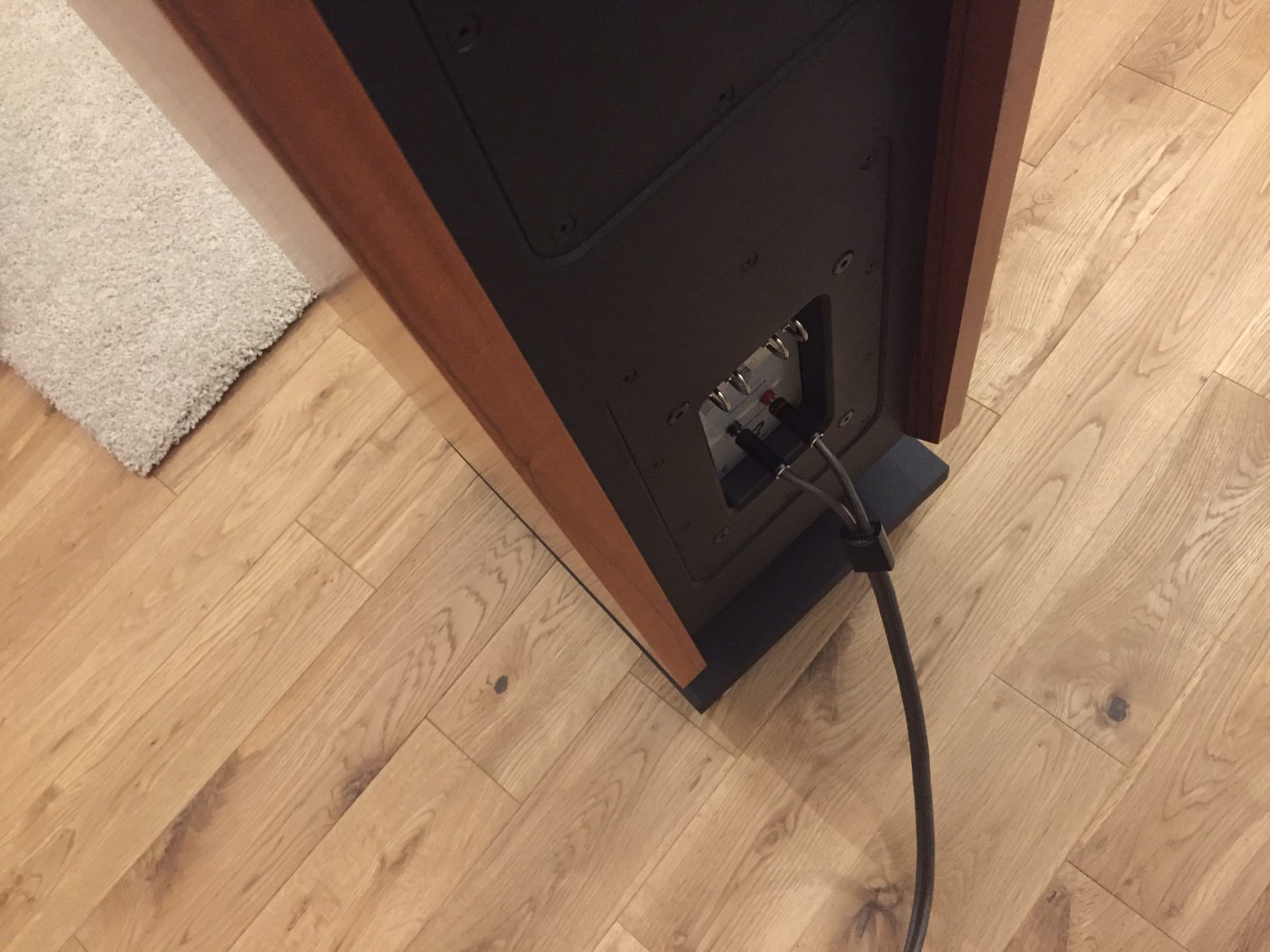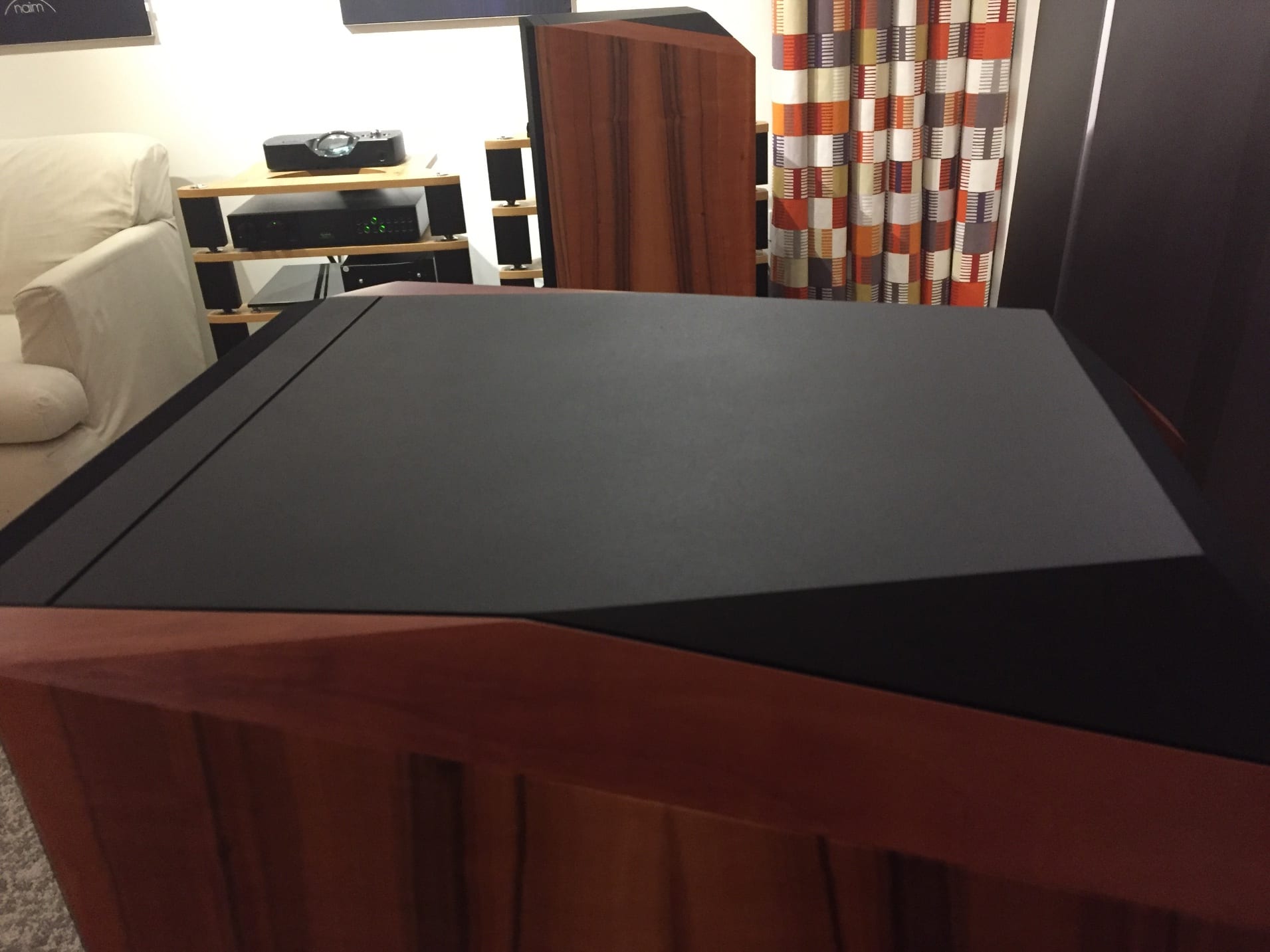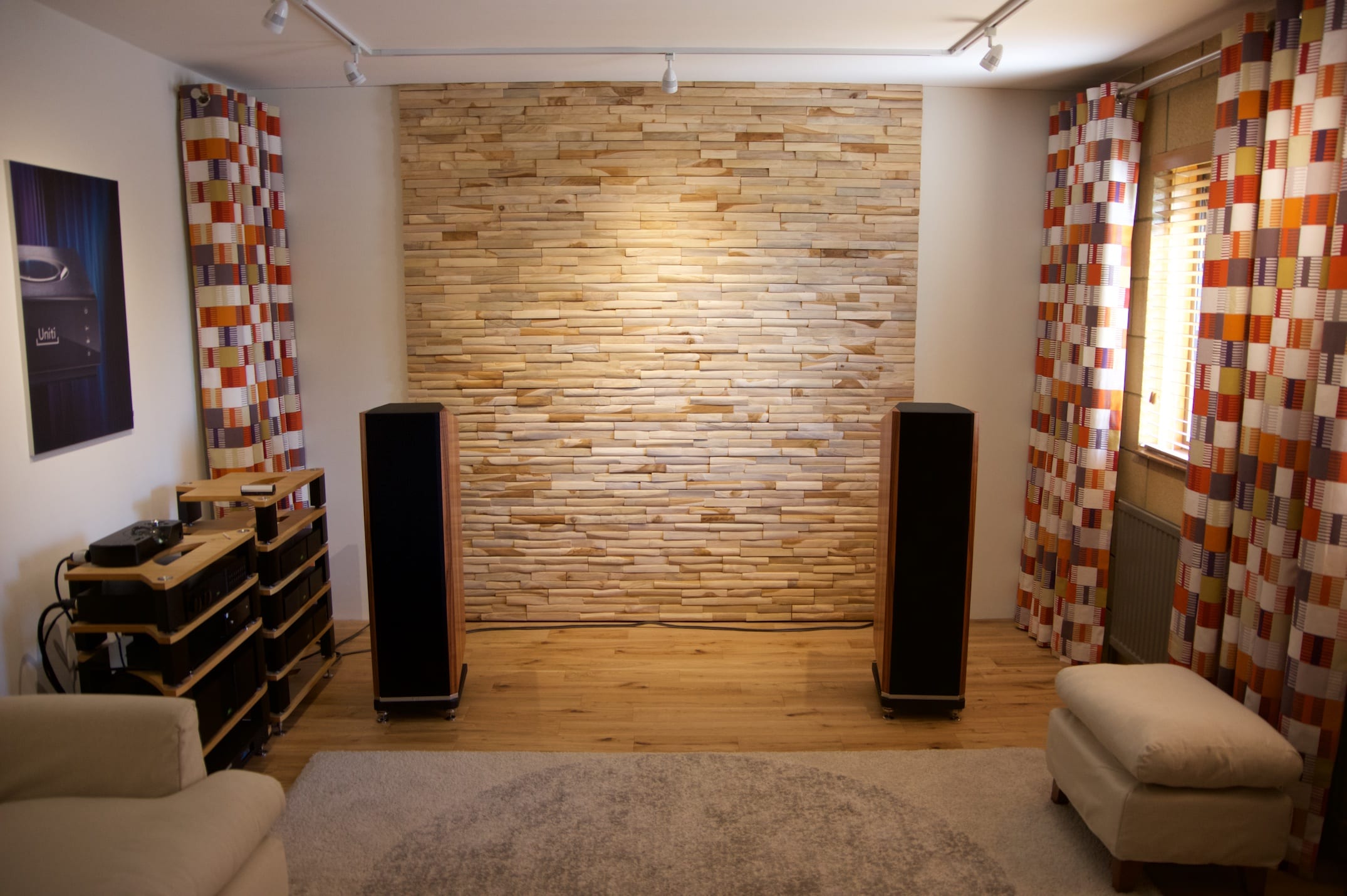Just a quick note on how our two day Kudos Titan Event panned out. . . . along with the fervent wish that we would remember to take pictures when people are actually here.
Derek & Dave, the Kudos team, rolled up on Wednesday afternoon with the pre production Titan 606s. Our new demo 707s had been due the day before but got delayed, arriving less than an hour before them. There had been some run-in applied prior to dispatch, thankfully.
Set up in our larger ‘normal’ room with Melco N1Zh / Chord Dave feeding into a Naim NAC552 DR /NAP500 DR combo, the results were instantly impressive. After some subtle repositioning and switching the Chord to reversed phase, no idea why it matters, things sounded better still. Our existing set-up with the 808s on the Statement System in the tall central room was deemed satisfactory so was used ‘as is’.
In our smallest music listening room, we had the 606s hooked up to a Naim NDX / XPS / NAC 252 / NAP 300 DR system. All the Titan loudspeakers have the bass drivers in Isobaric configuration. Both 606 and 707 are two way designs, the 808 is technically two and a half way with an additional Isobaric sub bass cabinet below.
From the outset, Derek explained that the 606s were being used with 2 x 8 ohm drivers. When set up for isobaric use, these are in parallel and this leads to a nominal 4 ohm load. The intended arrangement is to use 16 ohm drivers, so this is a temporary expedient, otherwise known as a bit of a cock-up, because the wrong drivers were sent. The upshot is that they draw a lot of current at the port resonance frequency and this means they sound meaty. Very meaty. Actually, rather too meaty. A small adjustment to port length offset some of this but it was best to accept that these were not quite the finished article.
On most music, though, they replicated the refined openness of the larger Titans. The bass was very extended too. One or two people, who were unaware of the situation, felt that they sounded ‘a bit to big for the room’. Given their fairly modest size, this made me smile. One or two listeners liked them best of all.
The treble quality and mid-range clarity is consistent across all three models. All share the same mix of partial thin wall cabinet construction with the thick outer damping panels located at strategic points. All can be configured for active use. There is quite a lot going on beneath the surface. Grilles are now designed to not mess up the sound and the overall styling strikes us as being well judged. Finish is exemplary, weight inconveniently high.
With the conventional rooms generating very impressive bass output, the casualty in all of this was that the Statement powered 808s in the central ‘hall’ were the least impressive.
Things went well enough on day one, Thursday, with the 707s being especially well-received. A few commented that they actually seemed to trump the 808s and, by Thursday night I was fairly convinced that we must have the set-up in the big room a little wrong. We had certainly been able to get a more weighty sound in the big room during a previous set up session but with a greatly reduced sense of space, placement and general airiness. I suggested to Derek that maybe we should experiment with moving them around but he was very reluctant to change anything.
First visitor on Friday was a customer that we know well and who has heard the Statement / 808 combo back at my house in the past. He had been to one of our opening days but had not had a proper listen to the big system in the big room. John mainly plays grown-up music. Classical and Jazz. None of the impressive stuff of demonstrations. He already has a pair of T88 Titans at home.
We sat down to play locally stored music via the Naim NDS. Glenn Gould “A state of Wonder” Goldberg Variations was first on the list. The volume level was set fairly low, more akin to what you would hear sitting near the front at an un-amplified concert, and far lower than the typical ‘show-off’ levels that tend to happen when desperate dealers like us are trying to impress.
It was a revelation, too, with Gould’s trademark hum-along sounding like he was actually in the room. There was the timbre of his voice. The perspectives all seemed to make sense. All the phrasing and harmonics were translated clearly. He and the piano both simply sounded real. Magical.
Recalling how impressed I had been in another customer’s vast hall-like sitting room years ago when playing a Jessey Norman version of Purcell’s Dido and Aeneas, we then played the last act of a 1961 Janet Baker recording that we have on the network. Wow, let’s be posh, golly. The voice, the orchestration and the choir. The pacing, the tension, the depth. Utterly tangible. You were in the hall with them with a fresh acoustic enveloping you.
Finally an LSO recording of Dvorak’s from the New World. Yes, I know, the bread advert. Yet again, you are in a fresh and completely different acoustic. Instruments portrayed a long way into this deep space. Again, it was the sense of phrasing, the delicacy, the textures, the pacing. It was all deeply engrossing. Derek pointed out how the acoustic they were playing in seemed to remain even after the music stopped.
Coments between us at the end were reassuring too and even Derek, the designer of the speakers, turned out to have been blown away by what he heard. “How do you manage to make your speakers disappear?” asked John the customer. It’s a fair point. This did more for my own pathetic level of neurosis than I can ever explain. I also learned something, which can’t be bad. And, no, there were no drugs involved!
Later in the day, when we had a sizeable number of people around, we tried both the 707 and 808s on the same big system. The 707s sounded far better than expected, filling the space with ease. There were murmurs that the 707 underdog was maybe actually preferable.
Enlightened by the morning session, though, I could hear where the 808s were taking things to another level. They are faster, more agile, yet go deeper. There is much more scale, air and space. On the Uncle Lucius track ‘Keeping the Wolves Away’, the bite and decay on the bass drum was clearer and better controlled. Overall, there was more dynamic freedom, making the speakers seem less part of the process. IE they actually disappear.
Others might not have noticed this. But I’m sure that, in time, they will 🙂





